Research Areas
Flow Control Based on Microfluidics & Nanofluidics
Advanced Flow Visualization Techniques
Biofluid and Biomimetic Technology
Blood-sucking mechanism of a female mosquito

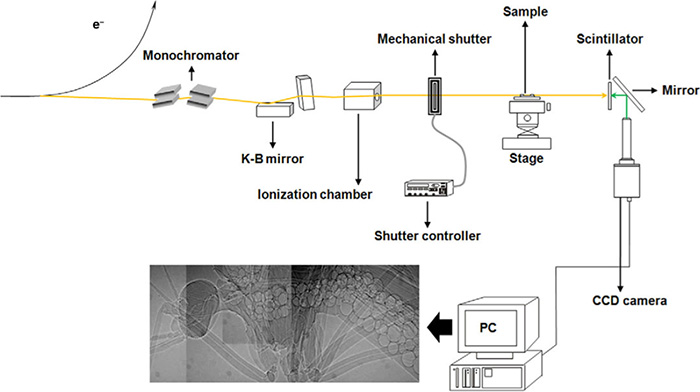

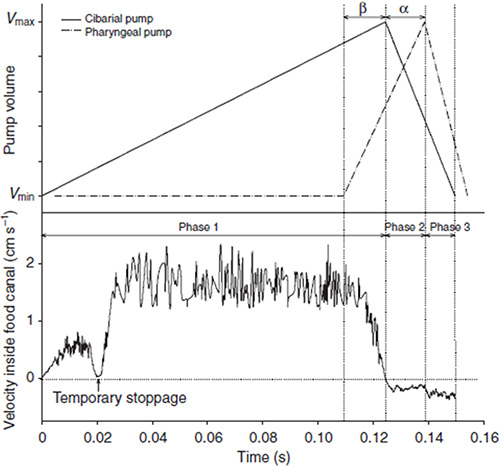



- Intake flow rate inside the food canal of a female mosquito
- The corresponding acceleration
- Hypothesized model for the volume variation of the two pumps.
The two pump organs of a mosquito operate in a well coordinated manner with a certain phase shift for sucking blood efficiently.
Liquid-feeding strategy of a butterfly


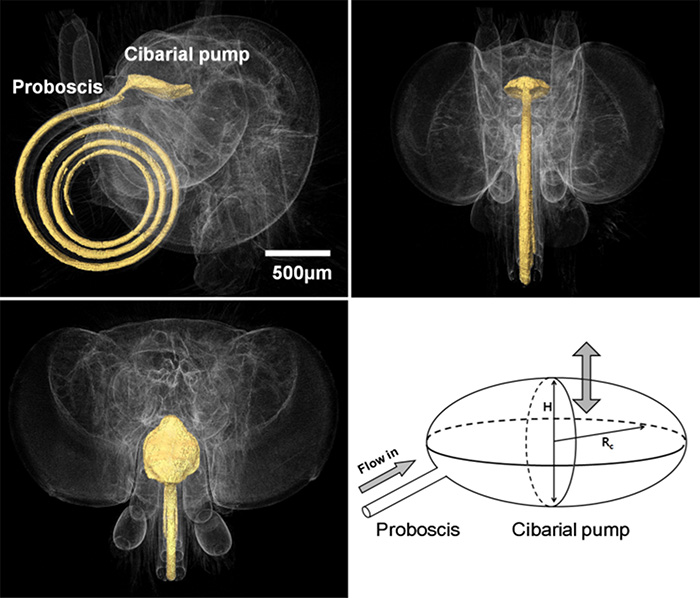
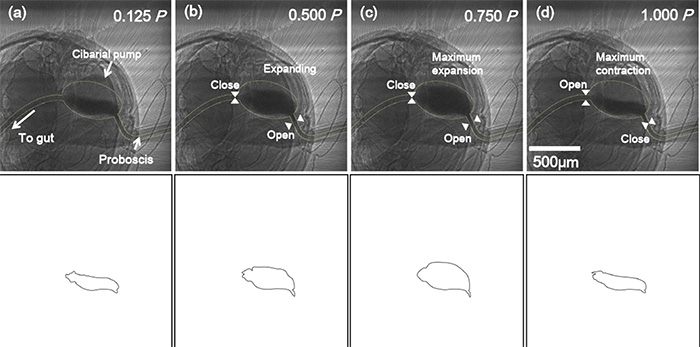
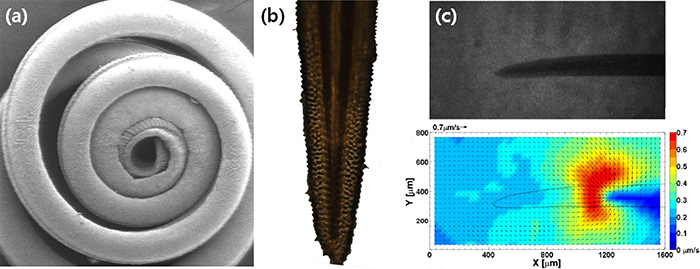
- SEM image of a coiled butterfly proboscis.
- Optical image of the tip of the straightened proboscis. In the tip region, the proboscis has a slit like structures.
- The trace particles image and velocity field around the tip of the proboscis. The liquid is sucked into the slit structures.
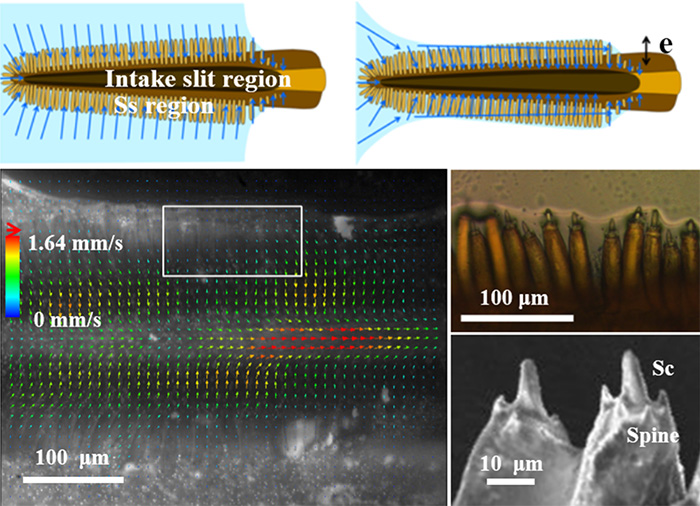
The brush + intake slit combined structure increases uptake of liquid from the wet surface.
Butterflies have developed effective strategies for compensating the disadvantages of a long proboscis and adapting to liquid sources.
Development of a biomimetic micropump
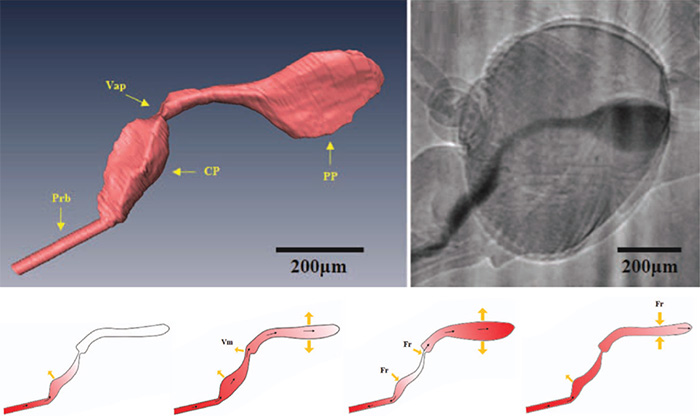
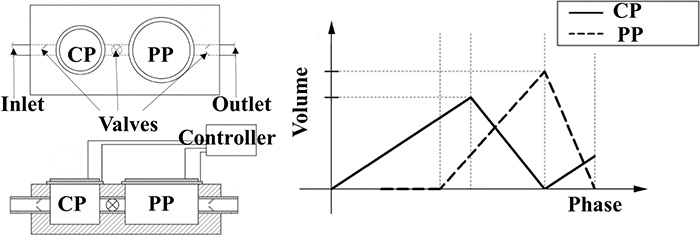
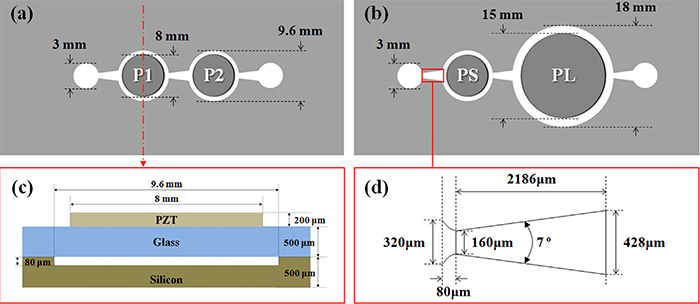


- Volume flow rate of the type 1 micropump with respect to operating frequency.
- Optimal phase shift giving the maximum volume flow rate with respect to operating frequency.

- Volume flow rate of the type 2 micropump measured with variation in the phase shift.
- Variation in the optimal phase shift with respect to operating frequency.
The pumping performance of the serial-connected two micropumps is heavily dependent on the phase shift. The optimum phase shifts of both micropumps are180◦ out-of-phase at high operating frequencies.
Comparison of blood-sucking strategies of Anopheles sinensis and Aedes togoi

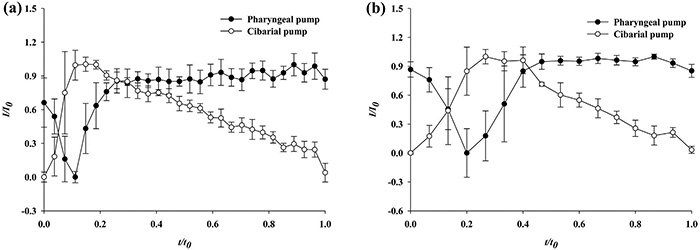
- Anophelesis sinensis and
- Aedes togoi
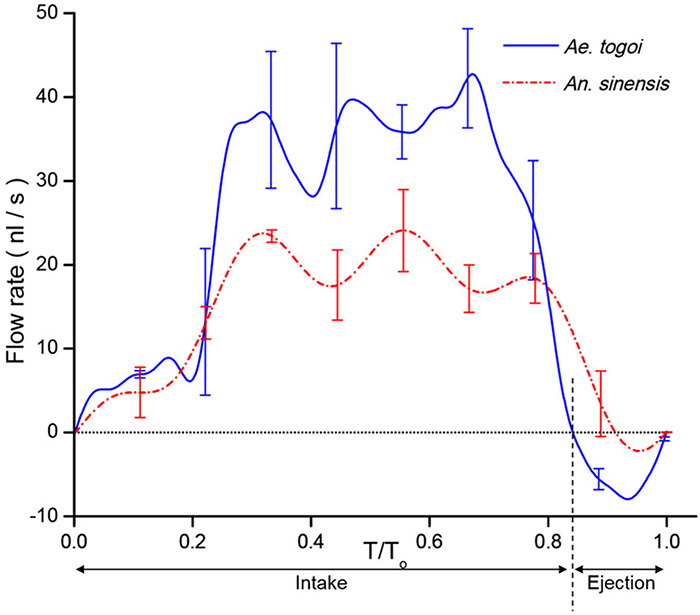

Two mosquitoes exhibit distinct differences in the range of flow rates and the ratio of ejection volume which can affect transmission of diseases.